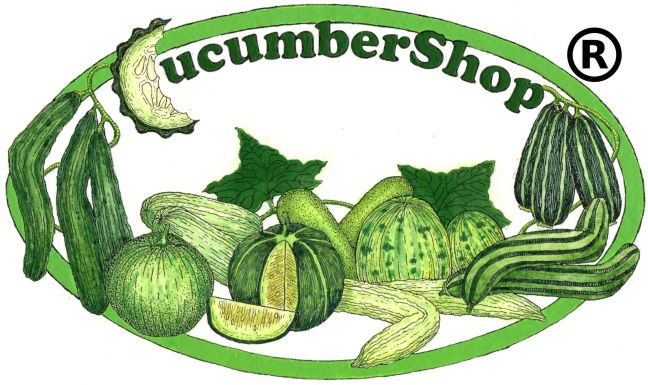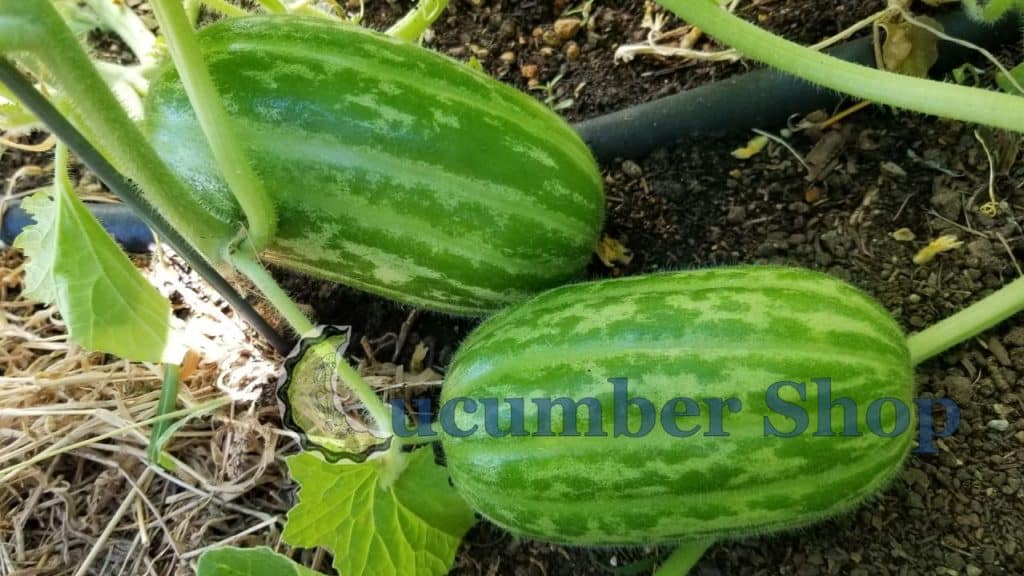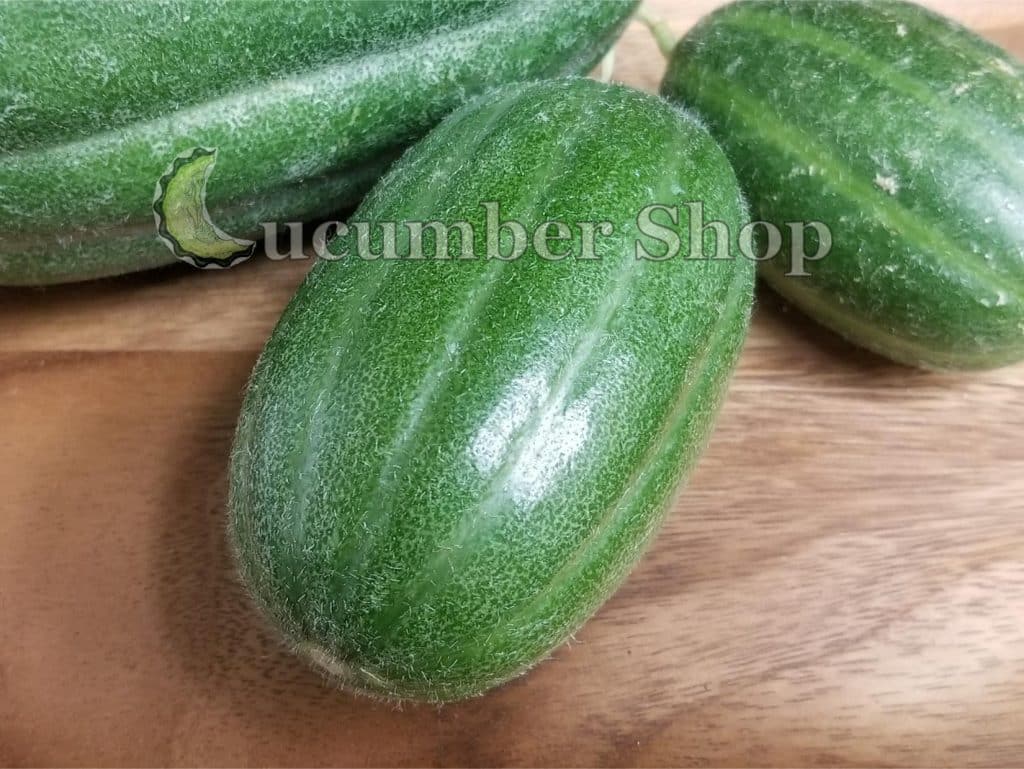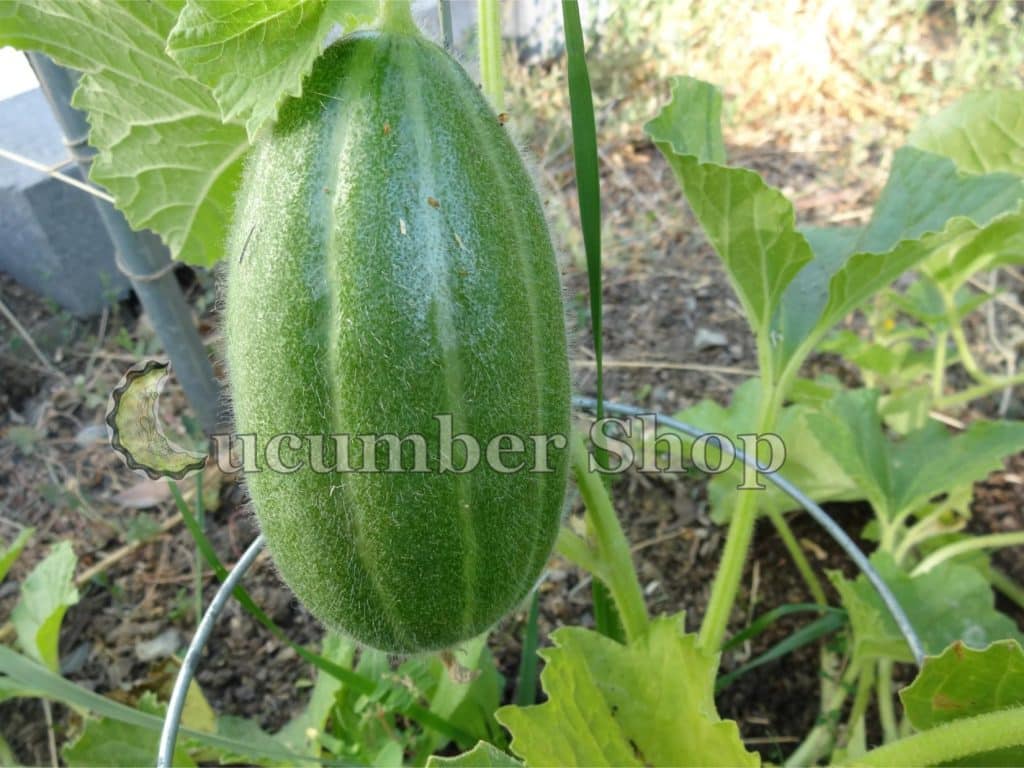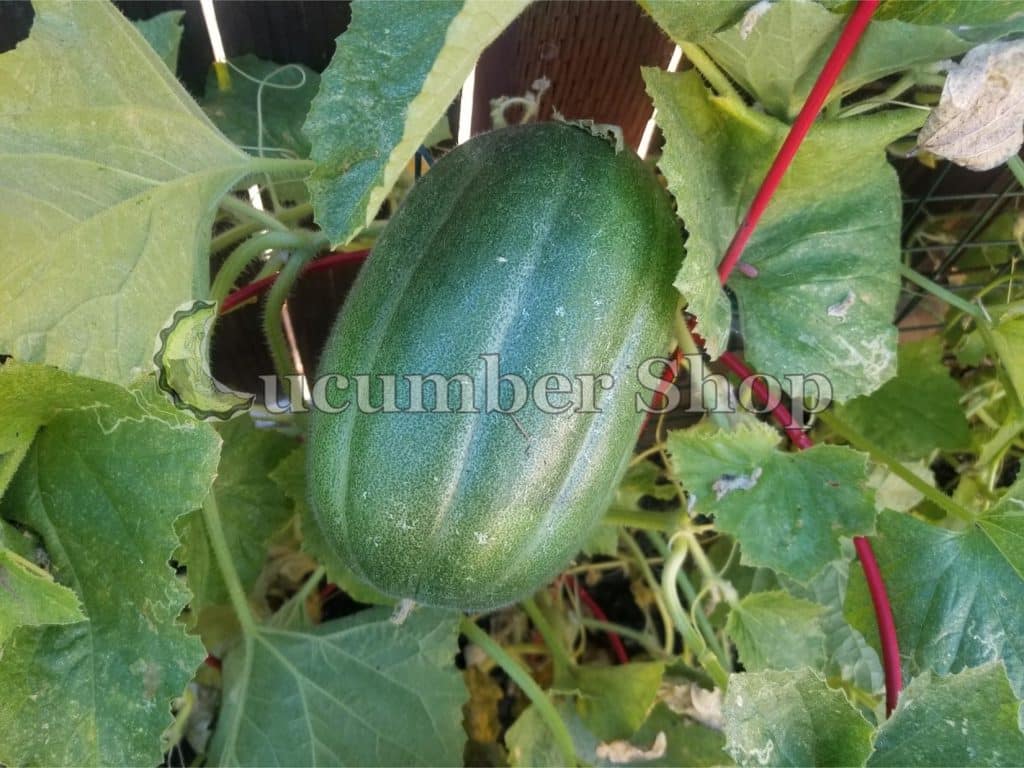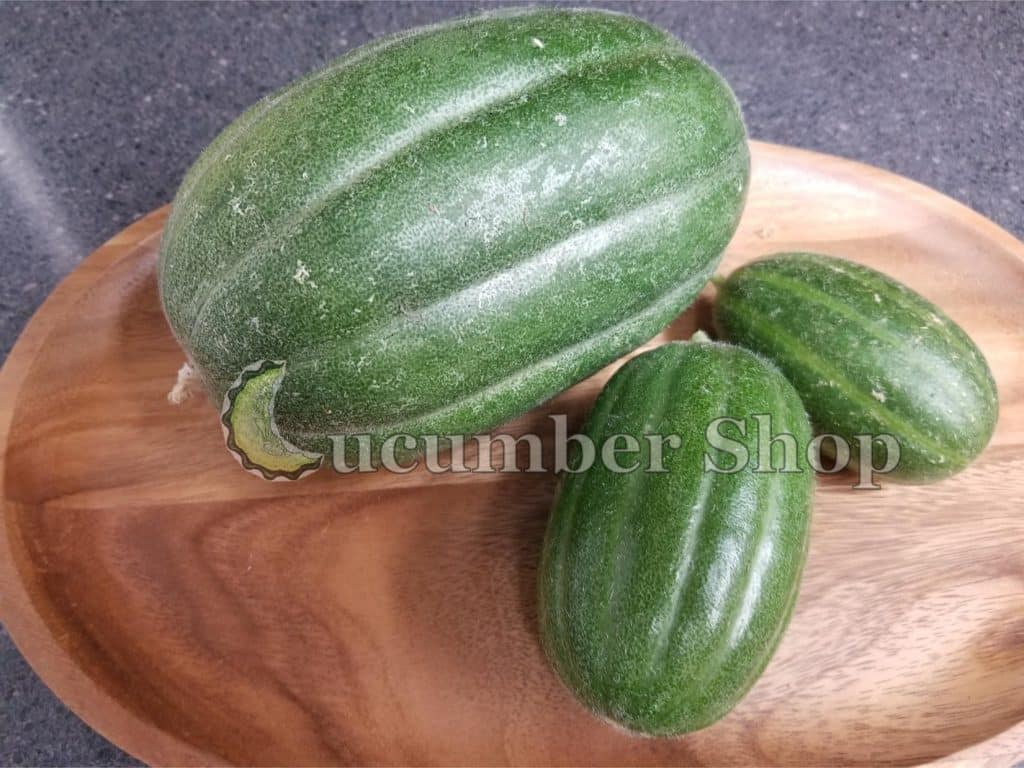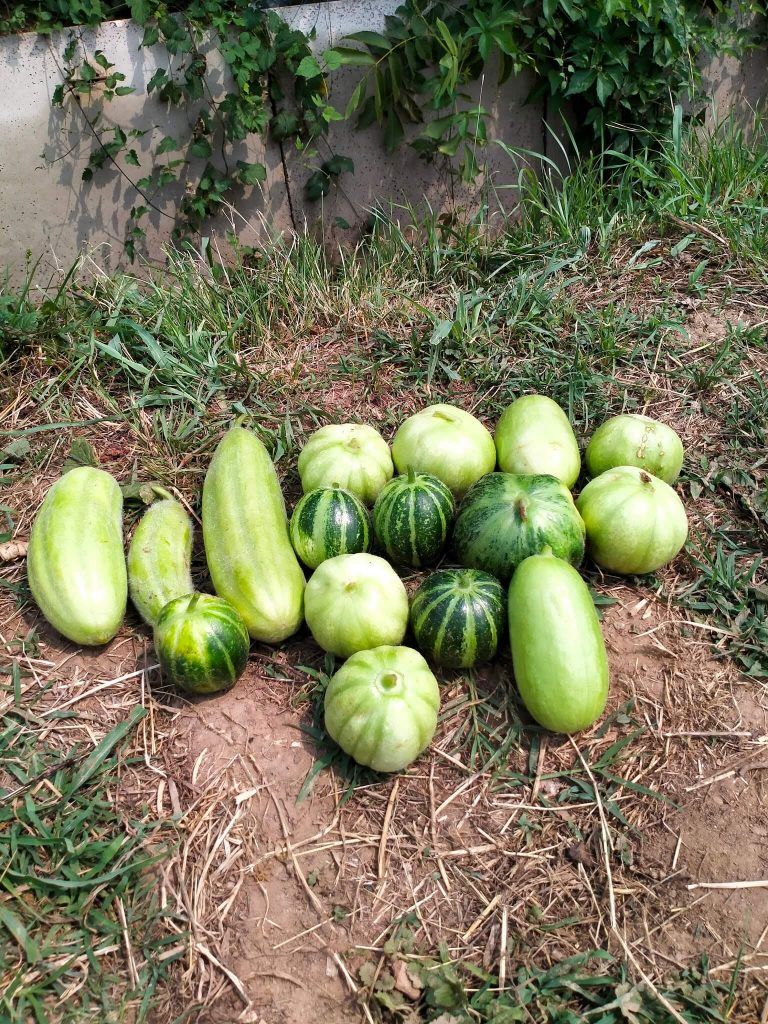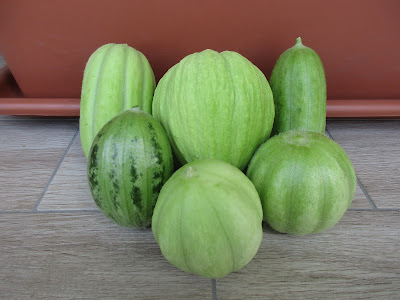What is the Striped Carosello Leccese?
The Striped Carosello Leccese or Meloncella Fasciata di Salento is an ancient variety of melon, cultivated immature as a cucumber and still grown around Gallipoli, Italy. Variations in vine and fruit length ensure long harvests of 4-6 inch cylindrical fruit with light flesh develops mottled dark bands exhibiting superb juicy crisp texture and flavor with a sweet aftertaste.
How do you save seed of the Striped Carosello Leccese or Meloncella?
As they ripen for seed, Striped Leccese or Meloncella cucumbers will begin to turn yellow or orange in color and may even begin to soften. If they begin to soften or easily pull from the vine (slip), then bring the fruit into a cool place to store until processing. Avoid trying to rush the process or cut open the fruit too early. There is a period of time in which the seed continues to develop within the fruit. The fruit is getting ready to process when there is a strong scent of melon in the air. Throughout the process, germination will remain high as you keep the area that the seed is stored in relatively cool (close to 70F, 21C is fine, 80F, 26C or above is not). Once large fruit is relatively soft when pressed on, slit them open length-wise and scoop out the seedy inner pulp into a colander with holes slightly smaller than the seed. If a good rinse and pulp massage does not clean the pulp out, the water can be squeezed out and water winnowing and a whisk can help clean the pulp. If seed still has a gel coating, squeeze out excess liquid and scoop the pulp/seed mixture into a jar to ferment. Usually 24 hours is as long as needed to ferment, if at all. Rinsed clean seed should be placed in a cool location with plenty of airflow to dry. Once seed is fully dry, winnow out very light seed, pack in airtight bags and refrigerate
How do you know the Striped Leccese or Meloncella is ready to pick?
Of all the varieties I have ever grown, when picked between 1.5 and 2” in diameter, no cucumber or immature melon variety I have tasted has been equal in flavor, texture and overall quality. This is truly the most “gourmet” of all the cucumbers. The very first time I tasted the fruit, I was blown away by the flavor and quality. Likely for the same reason, the Meloncella di Salento is the crown jewel of the varieties sold by the San Rocco Cooperative- the primary cooperative that markets these immature melons outside of the region of Puglia.
How did Cucumber Shop receive the Striped Leccese or Meloncella Fasciata?
The Striped Carosello Leccese or Meloncella Faciata di Salento was sold to me by the name of “Striped of Leccese” from a gentleman named Antonio. There were also other websites that named the variety “Striped of Leccese”. At first I didn’t believe that he had actually sold me what he claimed to have, but once the fruit darkened, I knew that it was what I had spent years searching for. Antonio said that the variety has been cultivated before records were kept in the lower Salento area is still grown in and around Gallipoli, Italy. He could provide no further information.
The BiodiverSO Puglia Website has some information about the variety under “Melone immaturo” here: https://biodiversitapuglia.it/varieta-orticole/
Where can I find posts or Videos about the Striped Leccese and Meloncella?
Blog posts can be found at ScientificGardener.com and Videos can be found at https://www.youtube.com/c/CucumberShop
Here are some Blog Posts I have done about the Striped Carosello Leccese or Meloncella Fasciata di Salento:
https://scientificgardener.blogspot.com/2021/04/the-striped-carosello-leccese.html
https://scientificgardener.blogspot.com/2019/12/taste-comparison-of-striped-carosello.html
https://scientificgardener.blogspot.com/2021/04/the-striped-carosello-leccese-part-2.html
https://scientificgardener.blogspot.com/2020/01/the-second-crop-of-striped-carosello.html
https://scientificgardener.blogspot.com/2022/03/working-with-farmer.html
https://scientificgardener.blogspot.com/2022/05/i-just-keep-growing-striped-carosello.html
https://scientificgardener.blogspot.com/2023/05/striped-carosello-leccese-at-h-farms.html
https://scientificgardener.blogspot.com/2023/05/working-to-partner-with-farmer-in-rio.html
Videos of the Striped Leccese or Meloncella Fasciata di Salento:
